Sometimes, you might not want want to play Yugioh the way it's being played right now. You don't want to go through half your deck to summon five negates. You don't want to recur the same cards from your graveyard over and over again. And you certainly don't want to twiddle your thumbs behind a couple floodgates. Sometimes - or maybe even all of the time - all you want to do is hit your opponent with one huge punch. If that sounds anything like you at all, then it looks like Crusadia might be the deck for you. So lets don our shining armor, step into formation, and get our basic training down for how to use this archetype.
Overview
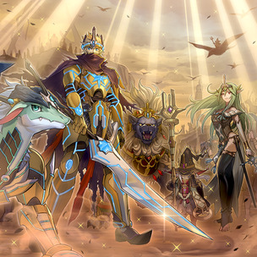
The Crusadia archetype debuted in the Cybernetic Horizon booster in 2018. It is one of eight archetypes contained by the "World Legacy" lore. The archetype combines the powers of its weaker monsters to summon and fortify one big boss monster, that then proceeds to strike the opponent for considerable damage. As implied, the signature feature of Crusadia is the magnitude of its offensive capability, as well as its consistency in unlocking it.
Since its debut, Crusadia has seen some rogue success, but has fallen off in recent years. But don't underestimate it if you ever come up against it. It has the power to surprise you with a ferocious attack, and it has access to a myriad of tools that makes it versatile.
Monsters
Main Deck



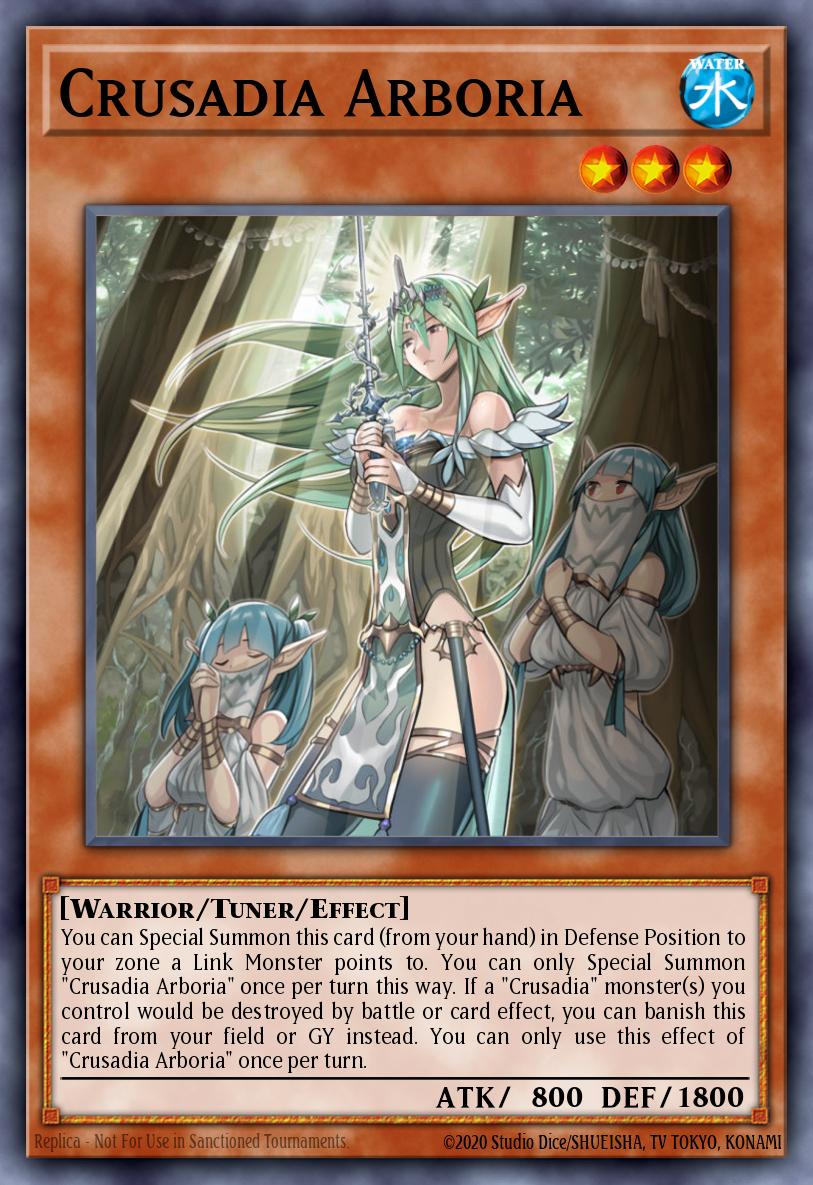
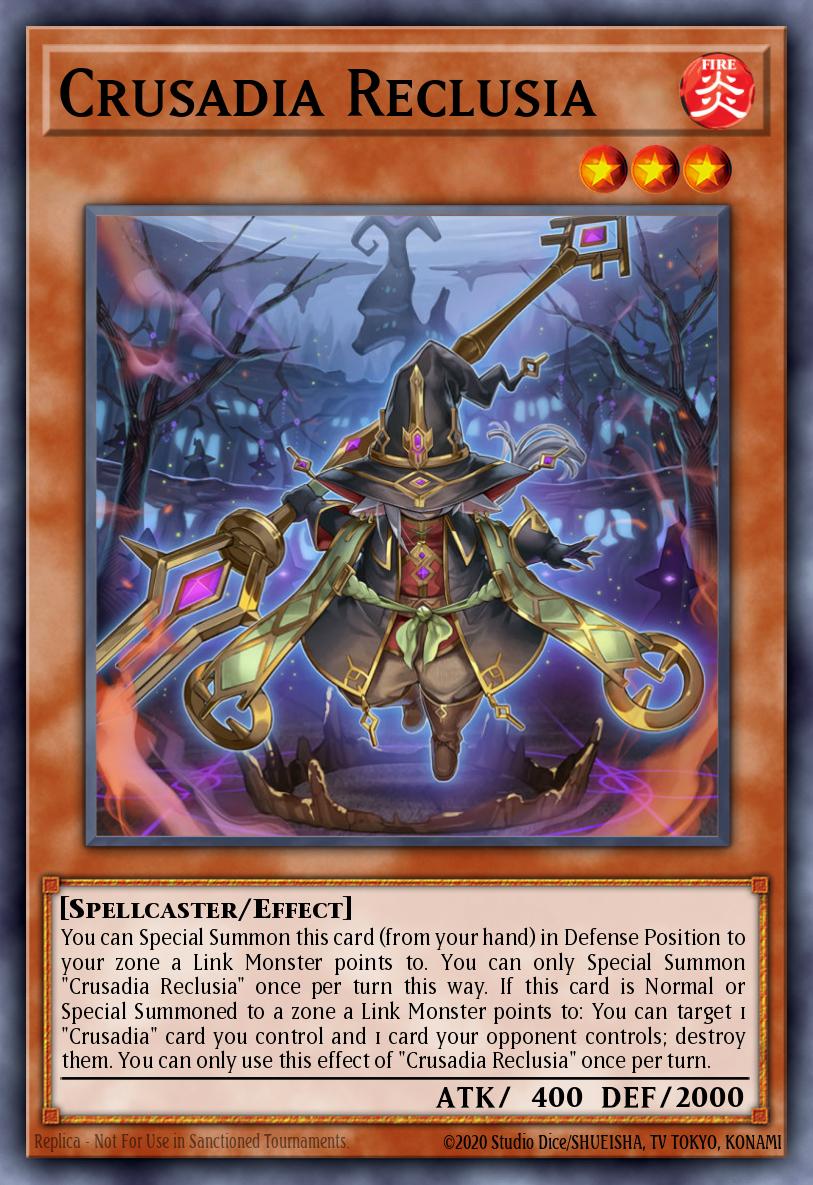
The main deck Crusadia monsters consist of five effect monsters, each with a different type and attribute. They also each have their own unique effect. These include destruction, protection, recursion, or maximizing damage. But they all share the same ability to special summon themselves to a zone a Link monster points to once per turn.
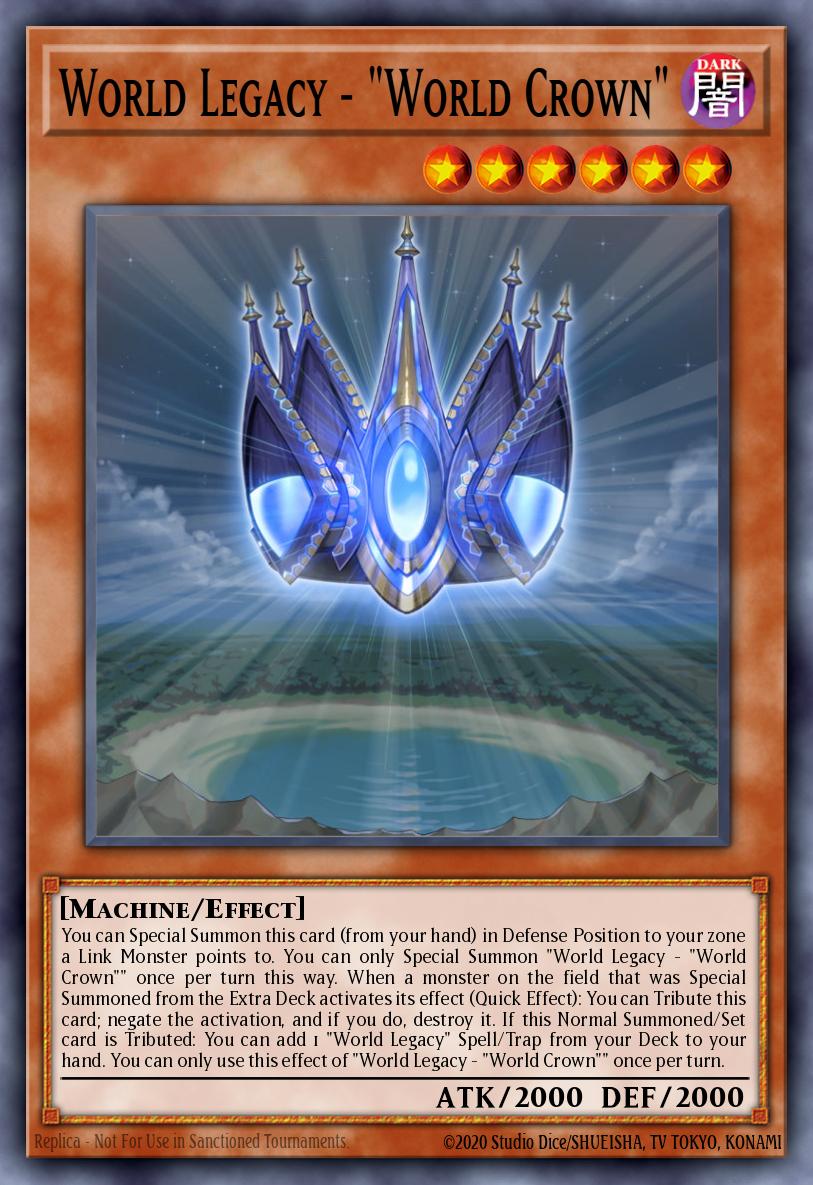
An honorary mention can be made here for World Legacy - "World Crown". While not a Crusadia monster, it has a similar function, special summoning itself to an open Linked zone. It can also tribute itself to negate the effect of an Extra Deck monster and destroy it.
Extra Deck
Combo Players



The Crusadia main deck monsters also have Link monster counterparts. Any single Crusadia monster can make Crusadia Magius (except itself), whose Link arrow points down into a main monster zone. The basic combo starts with normal summoning a Crusadia monster, making Magius, special summoning another Crusadia to Magius's zone, and from there combining their effects to climb into higher-Link monsters.
Each Link monster gains the attack of the monsters it points to. In addition, the lower-Link monsters each gain unique bonuses when a monster is summoned to their zone. Crusadia Magius searches another Crusadia monster from the deck; Crusadia Regulex searches a Crusadia spell or trap. And Crusadia Spatha moves a monster from one main monster zone to another - which, if you haven't seen it in action before, is much more significant than it might first seem.
Bosses

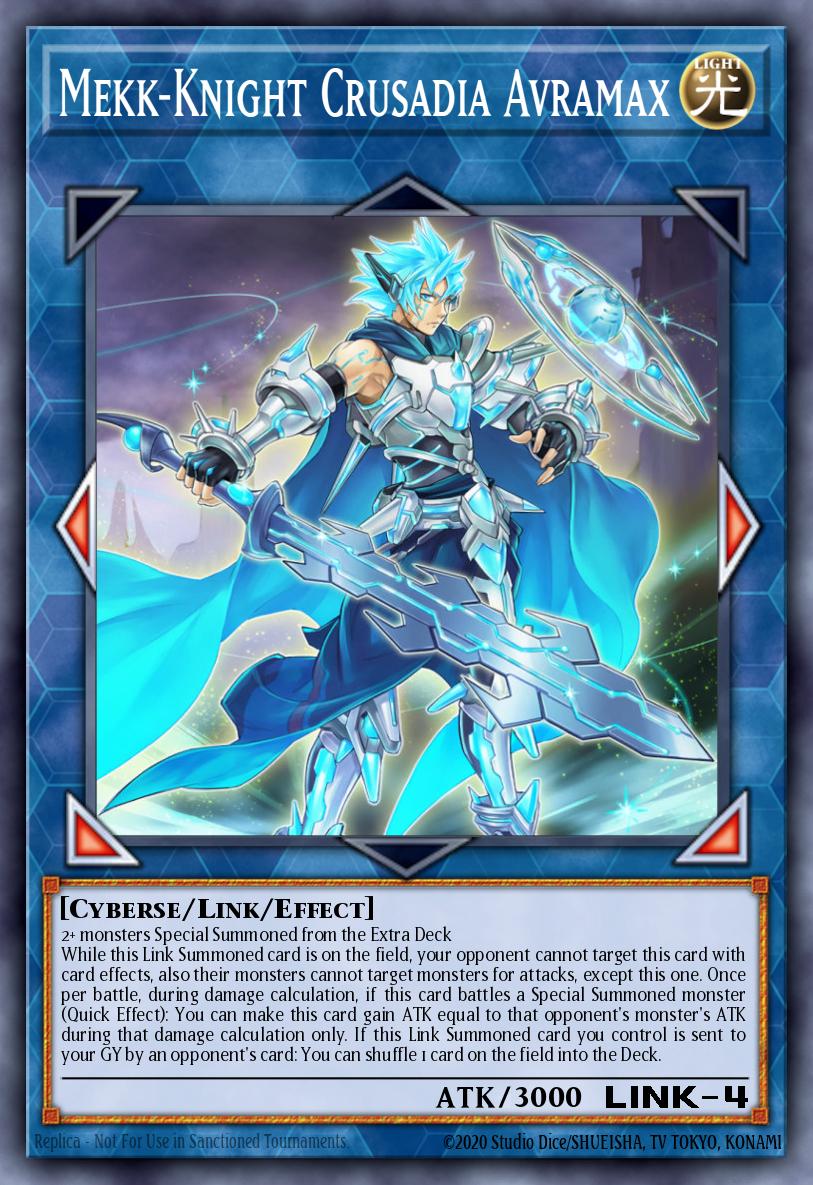
The go-to boss for Crusadia is Crusadia Equimax, a fusion of Crusadia Maximus and Crusadia Draco. Released with the original wave of Crusadia support, it retains the attack-gain effect of the lower-link monsters, but brings its own unique effect as well. As a Quick Effect, it can tribute a Crusadia or World Legacy monster it points to, target an opponent's face-up card, and negate its effects.
These effects by themselves doesn't sound so frightening. But there are a few key factors that make Equimax a devastating boss. First, that negation can respond to a potential obstacle to the OTK. Second, its three Link arrows give it a very high ATK ceiling with its effect. And third, the effects of Maximus and Leonis greatly increase its damage output. Taking all this together, a Crusadia deck can rather easily summon a high-ATK beatstick with piercing and/or double damage. This is the centerpiece for all Crusadia OTKs.
For a long time Equimax was the single boss on which Crusadia relied for its wins. But after a year, Dark Neostorm gave them a new win condition in the form of Mekk-Knight Crusadia Avramax. This card trades some immediate offensive output in favor of resilience and consistent power. Avramax can't be targeted by effects, and draws the opponent's monsters to battle him before any of your other monsters. This is, of course, a trap, as Avramax gains the ATK of any special summoned monster it battles. Sitting on this causes a headache for the opponent on both players' turns. And even if Avramax gets removed somehow, he still retaliates by returning a card on the field to the deck. Between Equimax and Avramax, Crusadia has two strong fists to choose from when deciding how best to hit the opponent.
Spells and Traps
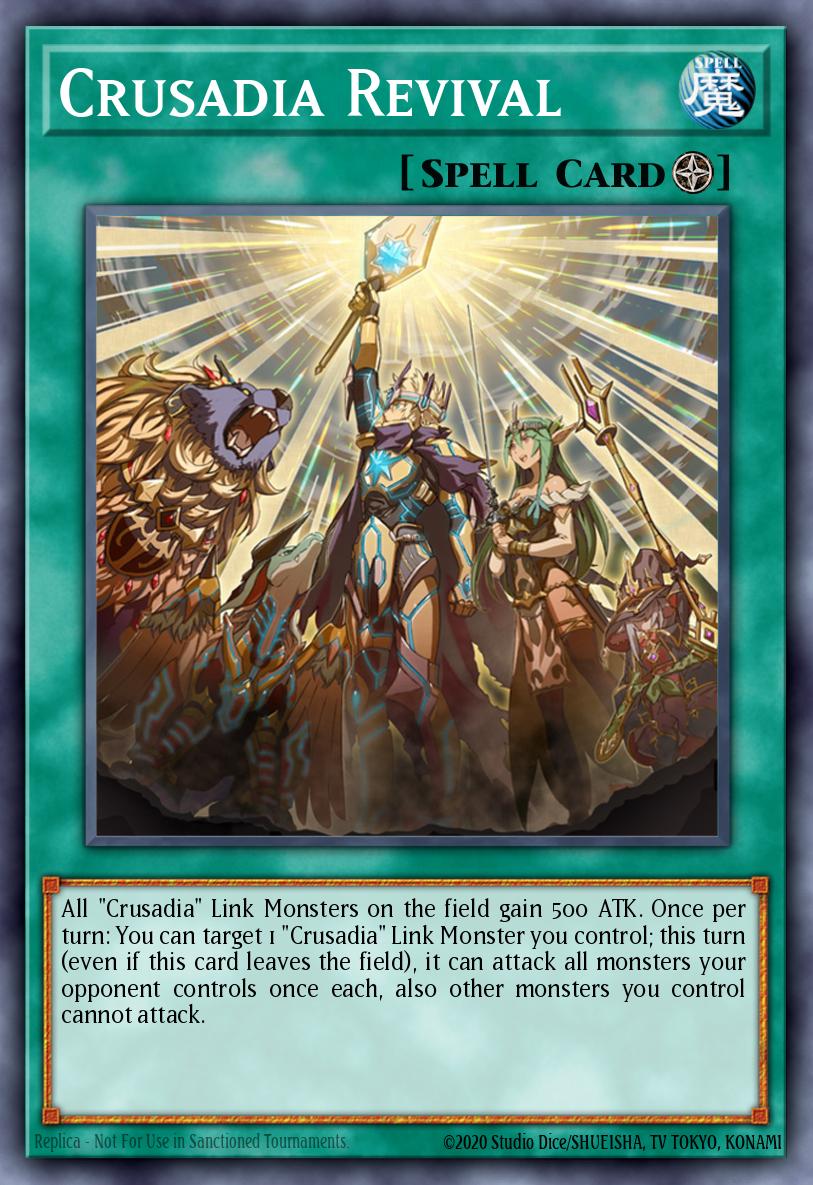


Crusadia only has a handful of spell and trap support. First of all, they have a Field spell, Crusadia Revival. It boosts Crusadia Link monsters by 500 ATK and lets one monster attack all the opponent's monsters. This card really helps OTKs; if Equimax couldn't OTK with one attack, now it can do several, depending on how many monsters the opponent controls.
Meanwhile, Crusadia Power protects a Crusadia monster from card effects. Combo OTK decks usually like to run Called by the Grave to protect their monsters from getting hand-trapped, but in Power Crusadia has a searchable, in-archetype alternative that covers the same, or even more threats. The last spell, Crusadia Testament, can fill a similar role by preventing responses to Crusadia monster effects. It can also draw cards when a Crusadia Link monster destroys another monster by battle.


The two trap cards are Crusadia Vanguard and Crusadia Krawler. Crusadia Vanguard doesn't see much play; its search effect isn't that great, and its passive defense doesn't do too much to help. Krawler may seem too slow to play. You have to wait a turn just to summon it, and then wait until the next turn to use the card you searched. However, it does have a niche use as an emergency body for Equimax to tribute, should you not open many Crusadias. And if it's part of your first turn board, a search target like World Legacy Succession can be a powerful follow-up play when it's your turn to attack.
Strengths
Crusadia has amazing offensive tools. Equimax can rise to ridiculous ATK levels, and negate a potential counter to its assault. Avramax is no slouch as a beatstick either. But where the offense truly shines is in the support. Between Reclusia popping cards, Maximus and Leonis amping up damage, and even Revival putting a target on every monster, Crusadia can just tear a board apart.
It's also notable how consistent this deck reaches its win condition. Any two Crusadia monsters, or one Crusadia and "World Crown," makes either Equimax pointing to a monster, or Avramax, with either a Revival, Power, or Testament, lurking on the side. And since the deck's pieces are all unlimited three or two-ofs, some variants opt to play Pot of Desires to increase advantage and consistency.
Finally, the basic core is relatively versatile; while it prides itself on OTKs going second, its going-first plan isn't too bad either. Avramax is a card splashed into many different decks because of how difficult it is to out. It's usually run in conjunction with I:P Masquerena, to protect it from destruction. Well, not only does Crusadia have a searchable main deck equivalent in Crusadia Arboria, but it also has access to Power to make Avramax even more unbeatable. At that point, its only out is hard-drawing a Kaiju.
Weaknesses
Going first, the Crusadia engine is rather susceptible to hand traps. Whether it's Ash Blossom & Joyous Spring on Magius, Ghost Ogre & Snow Rabbit on Regulex or Spatha, D.D. Crow on Draco, Infinite Impermanence or Nibiru, the Primal Being on any of these, or even Ghost Reaper & Winter Cherries on Magius or Equimax, there are many ways the opponent can interact with the combo. Without opening Power or Testament, the deck can struggle to play through disruption; even if they have it, some of the above counters can bypass it. The same principle applies when Crusadia goes second. With the multi-negate or even floodgate boards that modern decks make on turn one, Crusadia struggles.
Even if they could, Crusadia suffers from another problem: they don't have too much staying power. They can come out in full force on their first turn, going first or second, but they have little in the way of follow-ups. If their board gets broken, or if they can't OTK right away, they can find themselves running low on resources.
This is precisely why it's so important for Crusadia to make the most of their first turn. But if that first turn gets disrupted, or isn't too strong, it's only trouble from there.
Conclusion
Crusadia is a deck that consistently pushes an OTK or a decent turn one board, but is a little fragile and struggles as the game draws out. It has a very simple and linear play style, which makes it great for beginners, but perhaps a little predictable and easy to prey on competitively.
However, if you've been reading closely, you may notice a few questions left unanswered. How does Crusadia drop five negates? Why is Spatha so important? How did it break into the top tables with all its problems? On their own, Crusadia might seem lacking - but often, they're not alone. In part two of this analysis, I'll go over the different variants and engines that the deck has utilized in different formats to cover up its weaknesses and sharpen its strengths, allowing Crusadia to reach even greater heights.




